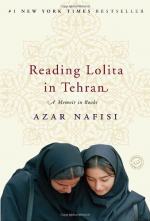|
This section contains 311 words (approx. 1 page at 400 words per page) |

|
Reading Lolita in Tehran, A Memoir in Books Summary & Study Guide Description
Reading Lolita in Tehran, A Memoir in Books Summary & Study Guide includes comprehensive information and analysis to help you understand the book. This study guide contains the following sections:
This detailed literature summary also contains Bibliography and a Free Quiz on Reading Lolita in Tehran, A Memoir in Books by Azar Nafisi.
Azar Nafisi's memoir, Reading Lolita in Tehran: A Memoir in Books (2003), describes her experiences living in Iran from 1979 to 1997. The country had just undergone a revolution when she returned in the late 1970s from schooling abroad, and an oppressive theocracy took the place of a western-influenced monarchy. Nafisi, a native of Iran who had received much of her education in Europe and the United States, found nearly every aspect of her life was constrained by the social, cultural, and political conditions under which she lived. Though she was demoralized by her increasingly diminished status as a woman and by the restrictions placed on her as a university professor, Nafisi never lost her love and appreciation of literature.
In Reading Lolita in Tehran, Nafisi intertwines her group-based discussions and own interpretations of novels such as Vladimir Nabokov's Lolita, F. Scott Fitzgerald's The Great Gatsby, Henry James's Daisy Miller, and Jane Austen's Pride and Prejudice with her impressions, memories, and stories of the Iran in which she and her students, friends, and family lived. Nafisi emphasizes the way literature relates to daily life in Iran and the indignities its citizens, especially women and academics, face. She hasadmitted that one reason she wrote the book was to help release the anger she still felt over those situations.
Reading Lolita in Tehran made the New York Times bestseller list for at least twenty-eight weeks, won the 2003 Frederic W. Ness Book Award, and was eventually translated into no less than ten languages. The book was brought in from other countries and read in Iran, despite being officially banned there. It generally received positive reviews, with many critics commending its complexities and depiction of life in Iran. Also, as Edward Luce wrote in the Financial Times (U.K.), "At its heart, Reading Lolita in Tehran is a passionate defence of the universal relevance of literature."
Read more from the Study Guide
|
This section contains 311 words (approx. 1 page at 400 words per page) |

|



